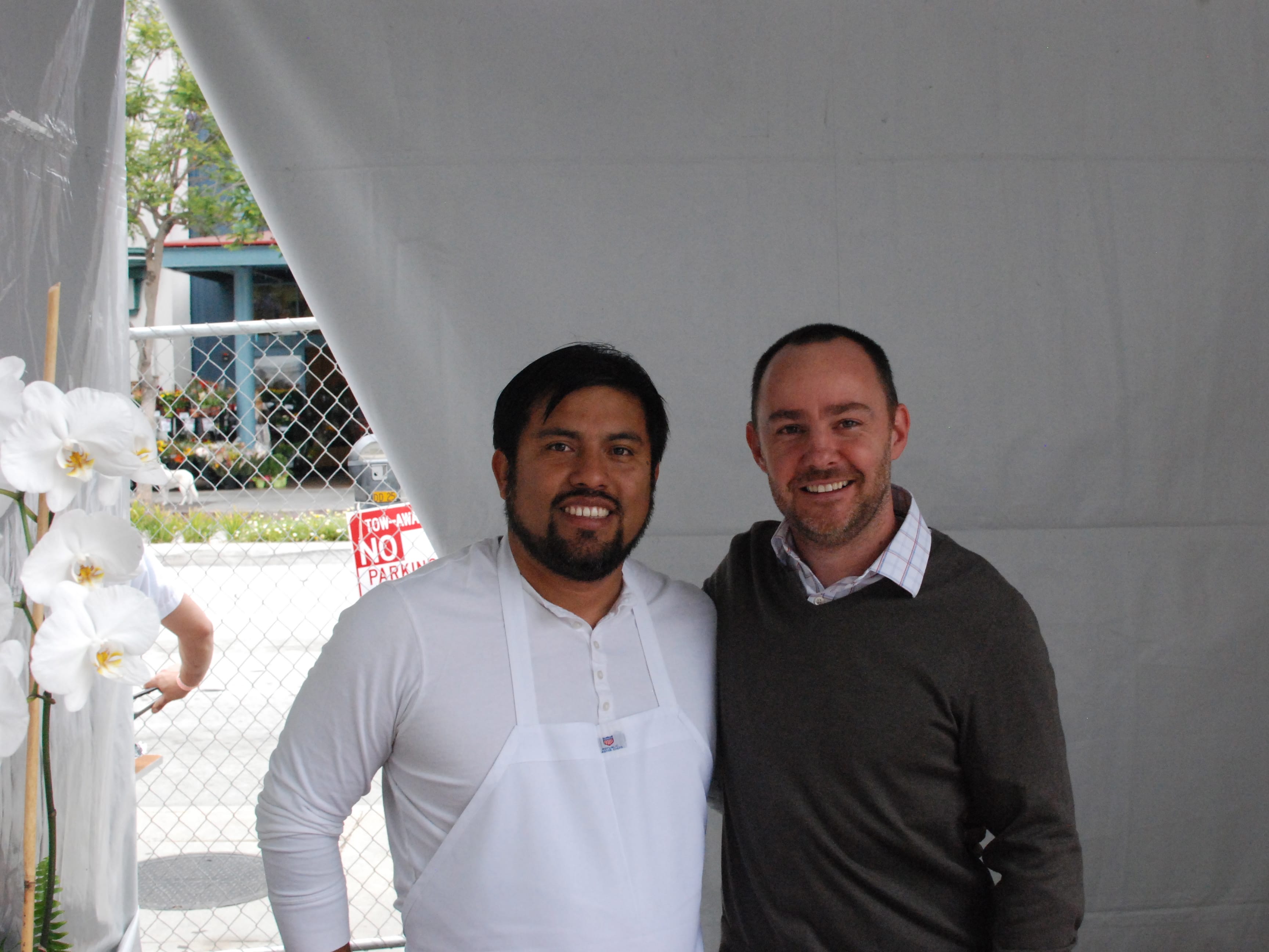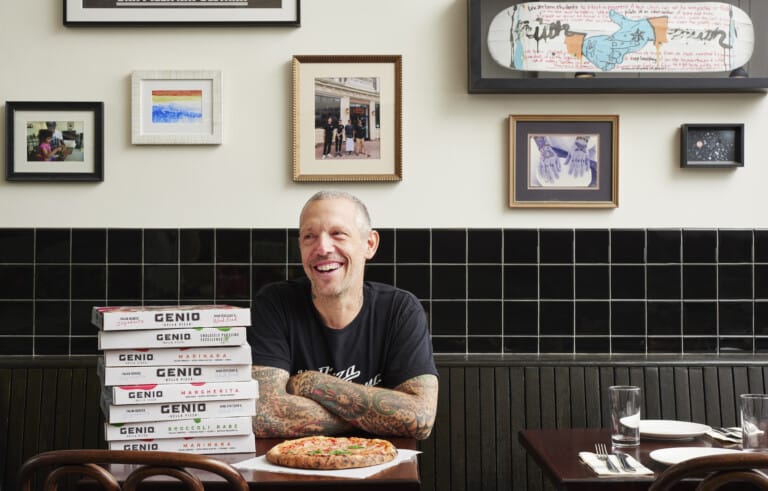Lima native Ricardo Zarate spent more than a year working two full-time jobs, heading the kitchen at Venice’s Wabi-Sabi while getting Mo-Chica rolling at Mercado La Paloma. All that effort apparently paid off. Mo-Chica has become a destination, Food & Wine magazine named him one of their Best New Chefs for 2011, and on June 25, Zarate and business partners Stephane Bombet and Bill Chait opened Picca, showcasing cutting-edge Peruvian tapas in Beverlywood. He also has a second Mo-Chica in the works downtown. Leading up to Picca’s opening, Zarate better explained his goals and vision for the restaurant.
What does Food & Wine mean for your career, or is it too early to say?
It’s an award. Of course I’m very happy to get it. I’m very glad to have this award. I know I’ve been working really hard. I really appreciate that, but I need to continue and do what I like to do, which is cooking.
How do you want Picca to be different from Mo-Chica?
It’s already different. Mo-Chica is more traditional. Mo-Chica is my favorite home Peruvian food, like what my mother used to make at home…Picca is a cantina. It’s actually reviving the cantina concept. In my country, it has kind of disappeared, and it is not a good name. A cantina in Peru is the type of place that is forgotten now, it’s dead, but it’s so traditional. I want to revive that. Small portions, it’s kind of tapas. Cantina is drinking and eating.
What’s the criteria for a dish that goes on the menu at Picca?
This first start for Picca is going to be very simple. Everything is going to be simple dishes, but tasty. It will complement either beer, cocktails or wine… It definitely has to have Peruvian roots. This is Peruvian, but a little bit modern. You have to have – we were talking about pastry, we have cheesecake, but it has to have aji Amarillo, something Peruvian. I will say that, because I’m making a Peruvian restaurant, I’m not going to do something different. I need to follow the roots.
What are some of the ingredients you can’t get in Los Angeles that you wish you could get from Peru?
I’m very close to making aji amarillo. Aji amarillo is one of the main ingredients. I’m getting it now from Peru, but it comes frozen, flash-frozen, but I’m growing it now here in California. I just received a phone call last week. It was good news. It’s actually growing.
In a greenhouse?
No, actually in an open field. I managed to bring some seeds from my country, so I will have them available in a couple months.
That’s the only ingredient that you miss?
No, there is a lot of produce from the jungle of Peru, the Amazones, a lot. That’s kind of my goal. I want to make Peruvian food accessible for everybody, for many chefs to start recognizing the produce. Media like this will help to open up more produce from Peru. There is this incredible amount of produce from Peru. Camu camu’s one.
What’s camu camu?
Camu camu is kind of a citrus from the Amazon. It’s very, very powerful, but it’s a fruity citrus. People from there, they use it instead of limes and lemons.
You thought about importing cuy [guinea pig], but decided not to?
It’s a delicacy in my country. It’s a very exclusive meat, but I don’t think here in Los Angeles, or in America, is ready for it. It’s a pet. Not now, maybe later on.
Do you have a garden on-site?
It’s a plan that we designed for this project. We will have a garden. It’s not ready yet, but we’re going to have our own vegetables growing in-house.
What do you plan to grow?
For sure, we’re going to have zucchini, tomatoes, herbs, microgreens, all different types of vegetables. Melon, watermelons, herbs, a lot of herbs.
How would you describe your working relationship with Stephane?
It’s fun. I think we make a great team. We understand each other a lot. I think we are good friends, and that helps a lot in the relationship as a restaurant, because we understand each other, and any idea, we work it out. We don’t need to confront.
How will you be able to balance this restaurant with two Mo-Chicas?
It’s a challenge. I’m not going to say it’s going to be easy, but I’m young. I still feel very young, and this is my chance, so I need to do it. The opportunity came. I took the chance and there is no way back. How am I going to challenge that? I did two at a time, now it’s going to be three. We’ll see.
What do you look for when you’re hiring somebody to work in the kitchen?
Loyalty, passion, and I don’t even ask for technique. It’s most important to me that people want to learn. If you have passion, I don’t mind to teach. If you’re eager to learn, you have to have the fire inside of you. Loyal, I say, because I will teach, but I’m expecting them to stay at least one year.
How important is your Japanese cooking background to what you’re doing here?
It is very important, in a sense, because that’s what I learned, and it helps me to be very disciplined in the kitchen. The most important part that I always teach to my chefs is how to be clean. Discipline in the kitchen is the most important thing. Cooking comes, if you’ve got the passion, it will come. The moment you’re ready, it will happen, but the most important part to learn in the kitchen is how to be organized, and that’s what I teach.
Now that you’re doing this here, what does that mean for the future of Mo-Chica? How will that restaurant evolve at Mercado La Paloma and downtown?
My hope is that people will have the choice now, to come here and enjoy Picca cuisine, which is Peruvian tapas, you know, cantina with small dishes. And if they want to eat more traditional, more Mo-Chica style, they can go to Mo-Chica. It’s completely different.
The second Mo-Chica, will that be different from the Mercado La Paloma Mo-Chica?
My idea is to leave Mo-Chica how it is and my concept of Mo-Chica, I want to develop into as many as possible. That’s how I want to promote Peruvian cuisine. It’s going to be very simple, five, six dishes at the max. It doesn’t matter if one is closer to the other one, it’s going to be the same. It’s going to change in specials, but the restaurant, I call it my introduction of Peruvian food to Americans.









Leave a Comment